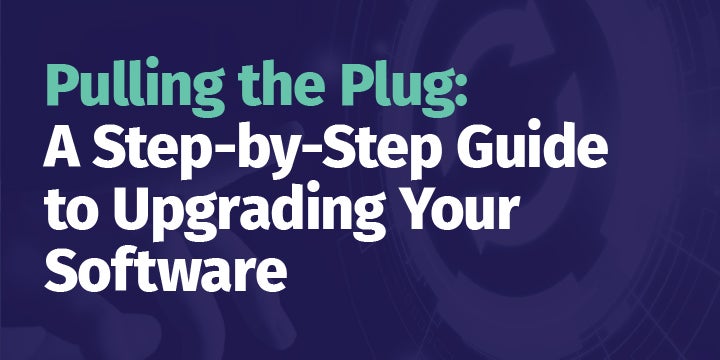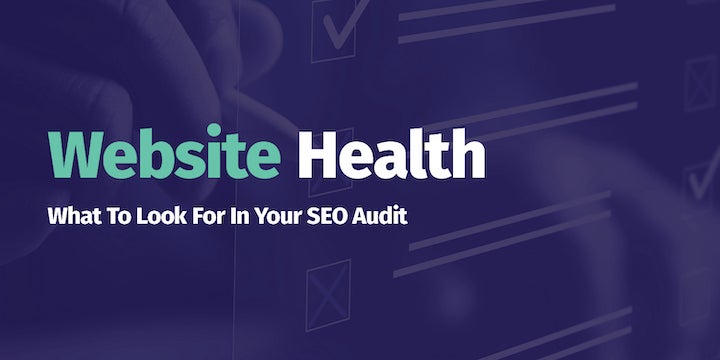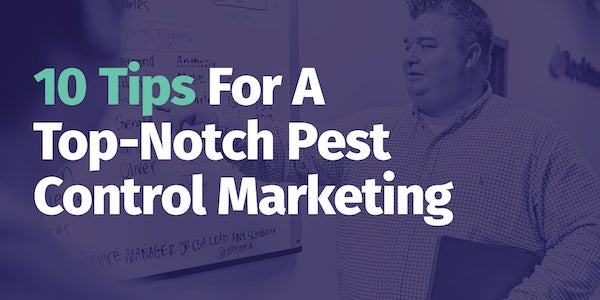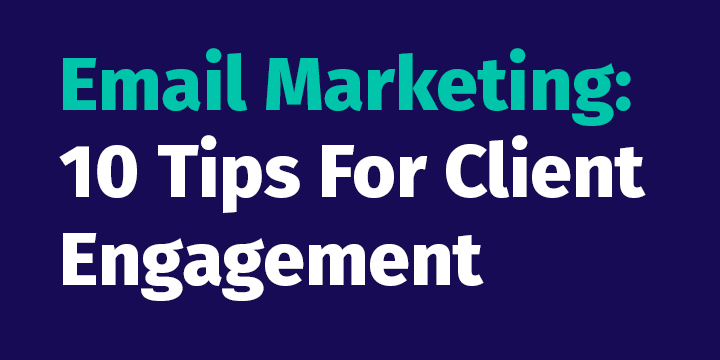How Do Google Ads Help A Lawn Business Grow & Expand

As a lawn care business, your job is all about growth in a literal sense—helping lawns grow healthy while stopping them from becoming unruly. But what about growing the business itself? As you help your customers’ lawns thrive, you need a marketing strategy that can help your business grow and expand if you want lasting success.
Creating a successful Google Ads campaign can play a critical role in that strategy. In this guide, we’ll take a deeper look at how Google Ads work, the impact they can have on your business, and the strategies and tactics you can employ to make your Google Ads work for you.
What Is Google Ads?
Google Ads is an online advertising platform that field service companies use to promote their products and services on Google Search, YouTube, and other sites. Formerly known as Google Adwords, Google Ads presents a way for businesses to appeal directly to their target customers by displaying relevant ads whenever they make a search query.
Even if you have never used a Google Ad campaign, you are no doubt familiar with Google Ads themselves. For example, if you’ve made a Google search for a product or service within your geographic area, the first few results listed are no doubt Google Ads. They are denoted by the bold “Ad” next to the website URL on the search engine results page (SERP). According to the Securities and Exchange Commission, over 80% of Alphabet’s [Google’s parent company] yearly revenue comes from Google Ads and the various services under the Google Ads umbrella.
Google Ads give business owners a great deal of versatility and customization options that can help them target potential customers with more precision than ever before. Google Ads includes SERP features within the Local Pack, which contains specific search features that show up when a search query includes a local service, local intent, or a geographical name. Business owners have complete customization and can construct their ads in numerous formats.
Google Ads give searchers the ability to immediately interact with your website, allowing them to call your business, install your app, or visit your online store with the click of a button.
Benefits Of Google Ads To Advertisers
Google Ads works in favor of the advertiser in a number of subtle and not-so-subtle ways.
The first is in the format itself. Google Ads advertise and promote specific products and services when people make relevant searches for them. That means that instead of having to try to reach your target audience, your target audience comes directly to you at the perfectly timed opportunity. Not only do they know their problem, but they’re also actively looking to make a purchase to resolve it.
The second is their location on the results page—right at the top. You can’t miss them, even if you end up scrolling past them. The first results in Google typically get the vast majority of traffic, with as much as with as much as 33% of all traffic going to the first link on the page according to this study by online ad network Chitika. If your ad gets the top spot, it’s got a great chance of getting clicked on.
The third is the number of customization options given to users. Field service business owners are given options for how they structure their ads, the different formats they use, and the budgeting they want to allocate. With the right strategy, owners can achieve a great return on their investment.
How Do Google Ads Work?
When you search for anything on Google, the keywords in your search along with your geographic location, are used to formulate your search engine results page. If your keywords involve specific goods or services, your first few results will probably be Google Ads.
Google Ads uses a pay-per-click (PPC) model. Business owners pick specific keywords they want to target and make bids on those keywords. If you bid on a keyword, that is considered the highest amount you are willing to pay for that ad.
Marketers using Google Ads have three options for how they want to make their bid:
Cost-Per-Click (CPC): A bid you are willing to pay when a user clicks on your ad
Cost-Per-Mille (CPM): A bid you are willing to pay per 1000 ad impressions
Cost-Per-Engagement (CPE): A bid you are willing to pay when a user performs a specific action on your site, such as watching a video or signing up for a mailing list
When someone makes a search using the keywords you’ve targeted, the primary factor determining whether or not your Google Ad will appear is the cost per click. If Google determines that the cost per click is higher than your maximum bid, you will not get the ad placement.
Quality Score
When you bid on an ad, Google pairs your bid with an assessment of your ad called a Quality Score. Google assesses every ad created and gives it a Quality Score expressed in numerical values from 1 to 10. This score is an estimate of your users’ experience when they see your search ad baked on the overall quality of your ad, the keywords you used, and your landing pages.
The higher your ad’s Quality Score, the more relevant and useful Google has determined it to be, and thus the greater the probability that viewers will convert upon seeing it.
Quality Score is calculated by considering three components:
Relevance: How closely your ad matches your customer’s intent when they make a search query
Landing Page Experience: How relevant your landing page is when people click on your ad
Expected Click-Through Rate: The projected likelihood that a searcher will click on your ad when they make a query
Each of the above components are ranked with a status of “Above Average,” “Average,” or “Below Average,” which is determined by comparing your ads to those of other advertisers whose ads show up for the same keywords you’re targeting within a 90-day period. Ad quality affects whether or not your ad shows, where on the search results page your ad appears, whether or not your ad extensions show, how much you pay-per-click, and, ultimately, how your ads perform overall.
How Google Determines Quality Score
Google uses web crawlers to assess ad quality. Quality Score is determined from historical impressions of exact searches for the keywords you’re targeting, so changing keyword match types will not impact Quality Score.
If your ad has a dash in the Quality Score column, this means that not enough people have made searches that exactly match your chosen keywords to determine a definitive score.
How much you bid for your ad, your account structure, the frequency of ads, and the conversions reported do not impact your ad quality.
It is important to note that the Quality Score is not a key performance indicator (KPI) and should not be aggregated with the rest of your data, nor is it an input in the ad auction. It is simply a tool ad creators can use to identify how well your ads are targeting the keywords you have specified for the end-user. A number of factors go into your ad’s overall quality that are not encompassed by Quality Score, including the location of the searcher, the device they used to make the search, and the time of day.
However, even with a great ad, you are not guaranteed to get a top spot—for that, you have to strategize.
Google Ad Strategy For Lawn Businesses
Just purchasing Google Ad space doesn’t ensure you the top spot. You’ll also be competing against other lawn businesses for many of the same keywords. Now that you know how Google Ads work, it’s time to start putting them to work for your company. Here are some important tips you can use to make the most of your lawn business’s Google Ads.
Target Effective Keywords
In order to create Google Ads that work, you need to target your intended audience effectively. While the customer isn’t always right, you should always listen when they tell you what problems they’re facing that you could help with. Prioritize the keywords your audience is using when they search for help and target the specific geographic areas where they live, and you’ll be the first one that shows up when they make a Google search.
Choosing the right keywords to target is an essential part of finding success with Google Ads as they are highly targetable to specific tiered demographics. With effective keywords, you can speak your customer’s language — literally. To develop your keywords, you need to get into the mind of your target audience: what are their pain points? More importantly, what words and phrases are they using to express them?
As a lawn care owner, this means you should be doing research to not only find out what problems your potential customers are facing but also to address those concerns using the same terminology they’re using to search.
Start generally, but gradually get more specific as you focus your efforts on the perfect potential customer that fits the products and services you offer. If you’re a Los Angeles lawn care provider, you’ll want to include basic keywords like “Los Angeles lawn care providers,” but you’ll also need to get more specific if you want better results.
An important side note: don’t overdo it with keywords. Especially if you’re working within a limited budget, it’s important to be very specific and intentional with every keyword you use. Choose too many, and you won’t see a reliable return on your investment. For the best results, use only keywords that correspond to the most profitable demographics you hope to target.
Tips to help you target effective keywords:
Match the language in your ad to user search terms
Look for ad groups composed of many keywords that can’t easily be addressed by the same ad. Instead of attempting to appeal to all these keywords with one ad, you should create multiple ad groups that can address each of these keywords more directly
Group your keywords into themes based on product or service. For instance, instead of just targeting “aeration,” create separate ads for mechanical aeration, liquid aeration, etc.
By developing a great keyword strategy, you’ll be able to speak your customers’ language, leading them to your ad.
Stay Local
One of the reasons Google Ads fit naturally for lawn care websites is that most lawn care services are locally-owned and operated anyway. The beauty of Google Ads is that they can be very specifically targeted in a way that other types of ads cannot.
Location targeting allows you to customize where your ads will appear based on the parameters you set. These parameters can be as small as a single city or as large as an entire country. You can also set a specific radius around a certain location or define a group of locations where they should appear. They can even be set to appear around certain places of interest in the area of your business location(s).
One great tool to accomplish this is radius targeting. Radius targeting allows you to set the geographic area where your ads will appear within a certain radius of your chosen location instead of in specific towns or cities. If you’re running your lawn care service out of a central office, this is a great tool to ensure that the only people viewing your ads are the ones you can reasonably service.
To set a specific radius for your Google Ads:
Click “Locations” from the page menu on the left
Click the campaign you want to edit
Click the blue pencil icon, select “Radius”
Enter the address you’d like to use as the center of the radius into the search box
Enter the radius you’d like to appear for and a unit of measurement from the drop-down menu
Click “Save” to add the radius target to your campaign
For nation-spanning brands or e-commerce companies, this means targeting all of the locations they ship to. However, lawn care service providers have the benefit of being much more local.
But you shouldn’t just be name-dropping the towns and regions you represent; keep your keywords local. Carefully choosing your location targeting is essential to maximizing your return on investment (ROI) by only advertising to the people in your area who could realistically receive your services. Target only the specific customers within your reach, and don’t waste effort on people outside your service area. Remember that if someone from outside of your service area clicks on your ad, you’ll still have to pay for that click, so it’s important to localize your focus only to the people you can reasonably service. After all, if a website visitor is too far away to reasonably service, there’s no loss for you if they don’t find your website.
Consider Your Competition
Obviously, if your local competitors aren’t using Google Ads, that could present an opportunity you can capitalize on. But even if they are, you can check out what strategies they’re using and use that knowledge to adjust your campaigns accordingly. While this could mean trying to replicate their success, the real goal is to find a way to differentiate your ads strategy from what they’re currently doing.
If you paste a competitor’s website into the keyword panel, you can see what keywords they’re bidding on. This knowledge can help you see how your competitors are approaching their ad strategy, which in turn can provide valuable insights into areas they might be lacking where you can make a big impact.
Maximize Your Quality Score
Use the Quality Score diagnostic tool to identify which of your ads are looking great and which might need tweaking to maximize their effectiveness. This could mean creating new specific landing pages, redefining your keyword selection, or otherwise improving your ads.
You can check your ad’s Quality Score by:
Selecting the “Keywords” tab in the left menu on Google Ads
Clicking the “Columns” icon in the upper right corner of the table
Clicking “Quality Score” under “Modify columns for keywords”
Clicking on “Quality Score,” “Landing Page Exp,” “Exp CTR,” or “Ad Relevance”
Click “Apply”
You can also view your past Quality Score stats for a specific reporting period by selecting “Quality Score (hist.),” “Landing Page Exper. (hist.),” Ad Relevance (hist.),” or “Exp. CTR. (hist.)”.
If your ads are given the status of “Average” or “Below Average,” this indicates a potential opportunity to improve their performance.
An effective way to improve your ad’s Quality Score is to focus on improving any areas marked “Below Average” in the diagnostic tool.
Build An SEO-Friendly Website To Work In Conjunction With Your Ads
For your strategy to be effective, you’ll still need to get eyes on the page first. Just like choosing the correct keywords and selecting the right geographic area to cover, optimizing your website to work in conjunction with the ads you use is an important part of getting high ROI.
Google Ads are best used in conjunction with other search engine optimization (SEO) best practices. In addition to building an SEO-friendly website, your website should also be mobile-friendly to ensure that no matter how your readers are viewing your content, they’re getting the best and most-polished version available. More customers are shopping through their phones than at any other point in history, so ensuring your campaigns are mobile-friendly is the best way to stop potential customers from slipping through the cracks.
All your ads should have an accompanying landing page that corresponds to the ad. If you choose to carry ads for specific services you offer, make sure you have a dedicated landing page that the visitor is directed to when they click on your ad. This makes the process of turning new visitors into customers as streamlined as possible. If the ad leads them to your home page, that means there’s an extra step required for them to order that specific product or service. Putting the service itself front and center leaves fewer opportunities for the customer to click away or get distracted. To avoid paying for an ad click that doesn’t ultimately lead to a conversion, you need to streamline the process as much as possible.
Likewise, for the best results, your website should be optimized to make it easy for readers to navigate. As with your keywords, you should assume the mindset of your customers when designing your website. Think like a customer, and organize the content of your website by the keywords or product categories they’re searching for to make it as simple as possible for them to find what they need to make a purchase.
Analyze Your Results, Respond Accordingly
Google Ads feature a number of tools and options that give business owners a wide degree of flexibility in how your choose to run each campaign. Analyze your ads’ performance and adjust your overall campaign as necessary in response.
You may need to adjust your settings to ensure you’re showing up in the right geographic areas. Pay close attention to your conversions by device to see how your customers are interacting with your ads.
Google Analytics will allow you to monitor how your website is performing relative to your ads Gather customer data and traffic reports which you can use to decipher customer behavior and adjust both your ad campaigns and your website accordingly.
Fine-Tune Your Google Ad Strategy With Help From FieldRoutes
The beauty of Google Ads is that, with so many customization options at your disposal, there is no limit to the possibilities. However, for the best results, you should enlist the help of marketing professionals that can fine-tune both your Google Ads and your overall web presence to reach the perfect balance of message and visibility for your business.
FieldRoutes builds powerful, SEO-friendly websites that perfectly compliment Google Ads, drawing more people to your website that are searching for exactly the types of services your lawn care business provides.
In many ways, finding the perfect strategy to make the most out of your Google Ads is a full-time job. At FieldRoutes, our ad specialists know all the tricks of the trade to push your visibility further and get you noticed by your perfect potential customers. Combined with SEO-friendly websites and marketing services, we’ll craft you a recipe for success in your lawn care business’s marketing. Contact us today for all the details!
Your Partner In Growth
We hope this guide has been helpful. Whether you’re looking to add efficiencies, make things easier for your employees, improve your customer experience, increase sales, or anything in between, FieldRoutes is committed to helping your business reach its full potential.
The platform automates all aspects of field service operations for enterprise and small business customers that span office management, advanced route optimization, payment processing , digital sales, marketing, and customer acquisition solutions that accelerate growth, streamline operations, increase customer retention, and maximize revenue. Our Operations and Marketing Suites were built with your customers and employees in mind and can help you grow quickly, scale intelligently, and serve customers relentlessly.
Call for a Demo at 207.492.4235
Join the growing number of thriving businesses using FieldRoutes, a ServiceTitan company, to acquire new customers, improve automation, and crush the competition.
Works Cited
Search Engine Watch. (2013 June 20.) “No. 1 Position In Google Gets 33% of Search Traffic.” Search Engine Watch. Retrieved from https://www.searchenginewatch.com/2013/06/20/no-1-position-in-googlegets-33-of-search-traffic-study/
SEMRush. (2022 January 7.) “What Are SERP Features? An In-Depth Guide.” SEMRush Blog. Retrieved from https://www.semrush.com/blog/serp-features-guide/?kw=&cmp=US_SRCH_DSA_Blog_Core_BU_EN&label=dsa_pagefeed&Network=g&Device=c&utm_ content=484021036999&kwid=dsa-1053501812347&cmpid=11769537497&agpid=11733484 2871&BU=Core&extid=23669721634&adpos=&gclid=Cj0KCQjwhqaVBhCxARIsAHK1tiPIg_LVgcUbeXGqN7ra0guzlqMsOmmkFjhwPfCuLaQPmg2O6BdH63caAm1WEALw_wcB
Business News Daily. (Updated 2022 February 10). “Google Ads Secrets: What Works for Small Businesses.” Business News Daily Sales & Marketing. Retrieved from https://www.businessnewsdaily.com/7139-adwords-small-business.html
Google. (2022.) “About Quality Score.” Google Ads Help. Retrieved from https://support.google.com/google-ads/answer/6167118?hl=en
Google. (2022.) “5 ways to use Quality Score to improve your performance.” Google Ads Help. Retrieved from https://support.google.com/google-ads/answer/6167130
Google. (2022.). “About ad quality.” Google Ads Help. Retrieved from https://support.google.com/google-ads/answer/156066
Alphabet Inc. (2020.) Unites States Securities and Exchange Commission form 10-K. Retrieved from Alphabet Inc. Corporate Website: https://abc.xyz/investor/static/pdf/20210203_alphabet_10K.pdf?cache=b44182dBusiness News Daily. (Updated 2021 November 19.) “Conversion Tracking 101.” Business News Daily Sales & Marketing. Retrieved from https://www.businessnewsdaily.com/15919-what-is-conversiontracking.html
Google. (2022.) “Target ads to geographic locations.” Google Ads Help. Retrieved from https://support.google.com/google-ads/answer/1722043?hl=en
Louisiana State University. (2004 November 12.) Trimming And Edging Mechanically Compared With Herbicides. LSU AgCenter. Retrieved from https://www.lsuagcenter.com/topics/lawn_garden/commercial_horticulture/equipment/trimming%20and%20edging/trimming-and-edgingmechanically-compared-with-herbicides
Business News Daily. (Updated 2021 November 18). “Why Your Website Needs to Be Google MobileFriendly.” Business News Daily Technology Blog. Retrieved from https://www.businessnewsdaily.com/7808-google-search-ranking-mobile.html





